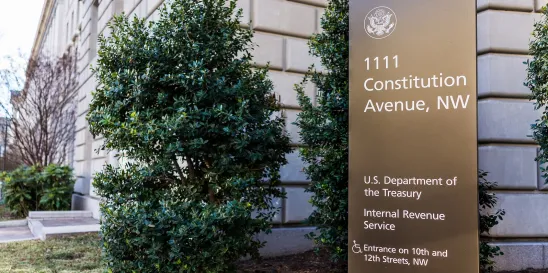On 17 November 2023, the US Department of the Treasury (Treasury Department) and the Internal Revenue Service (IRS) issued proposed regulations (Proposed Regulations) updating rules for the investment tax credit (ITC) under Section 48 of the Internal Revenue Code of 1986, as amended (Code).1 Because regulatory guidance on claiming the ITC has not been revisited since 1987, the Proposed Regulations are significant and largely reflect changes in the energy industry, including technological advances, over the past several decades.
SCOPE OF “ENERGY PROPERTY”
In addition to updating the definition of “energy property” under § 1.48-9 to reflect amendments to Section 48, the Proposed Regulations would adopt a function-oriented approach to describe types of components that are considered energy property.2 The Proposed Regulations outline two ways property can be classified as energy property: if (1) components of property are functionally interdependent, or (2) the property is an integral part of energy property.
Generally, components of property are functionally interdependent if the placing in service of one component is dependent upon the placing in service other such components in order to generate or store electricity, thermal energy, or hydrogen or otherwise perform its intended function.3 As such, energy property, subject to certain exceptions, includes all components necessary for generating or storing electricity or thermal energy up to, but not including, the transmission, distribution or usage stage.
Property used directly in the intended function of the energy property and essential to the completeness of the intended function is also considered part of the energy property.4 For example, power conditioning and transfer equipment (and the respective components and parts related to the functioning of those components) are considered energy property because they are integral parts of an energy property.5 However, roads primarily for access to the site or roads used primarily for employee or visitor vehicles are not integral parts of an energy property.6 Certain types of intangible property, such as power purchase agreements, renewable energy certificates, goodwill, and going concern value7 are not energy property, because they are neither functionally interdependent nor an integral part of energy property.
The distinction between the property being “functionally interdependent” or an “integral part” is particularly important in the context of offshore wind projects. While the preamble to the Proposed Regulations specifies that power conditioning and transfer equipment are not functionally interdependent components, such equipment is considered an integral part of energy property. Even though power conditioning and transfer equipment are not functionally interdependent, they qualify as energy property because they are integral parts of an energy property.
APPLICATION OF PREVAILING WAGE AND APPRENTICESHIP (PWA) REQUIREMENTS
Consistent with the statutory text of Section 48, the Proposed Regulations would similarly incorporate the PWA requirements of Section 458 in order for taxpayers to receive the full credit amount that was available before the Inflation Reduction Act of 2022 was enacted.9 Additionally, as discussed below, the Proposed Regulations provide further guidance on the One-Megawatt Exception (as defined below) and the recapture rules.10
One-Megawatt Exception
The PWA requirements are inapplicable only if construction of a facility began before 29 January 2023 or the project has a maximum net output of less than one megawatt of electrical or thermal energy (One-Megawatt Exception).11 The Proposed Regulations detail how to determine a project’s maximum net output to ascertain whether the One-Megawatt Exception applies and provide the maximum output for electrical generating units, energy storage technologies, thermal energy producing properties, qualified biogas property, and specified clean hydrogen production facilities.12 The preamble to the Proposed Regulations specifies that electrochromic glass property, fiber-optic solar and microgrid controllers are ineligible for the One-Megawatt Exception because they do not generate electricity or thermal energy.
PWA Recapture and Transferability Rules
The increased credit amount claimed by a taxpayer who failed to satisfy the PWA requirements is subject to recapture such that the taxpayer would only be entitled to the base amount of 6% instead of the full 30% credit amount. The recapture amount also includes an annual ramp-down of 20% of the recapture amount.13 However, taxpayers can still use the correction and penalty procedures of PWA to avoid recapture.14 The Proposed Regulations clarify that the 5-year recapture period for the Section 48 tax credit begins on the day an energy project is placed in service.15
In the event of a recapture after a tax credit has been transferred pursuant to Section 6418, the transferor must notify the transferee of the recapture event, but the transferee taxpayer is responsible for any amount of tax increase.16 The Proposed Regulations would also introduce a new annual information reporting requirement to verify compliance with the PWA requirements after the close of each recapture year.17 The preamble to the Proposed Regulations provides that the IRS expects taxpayers to fulfill the annual compliance reporting obligation when filing their income tax or other annual returns following the close of each recapture year.
RETROFITTED PROPERTY
The Proposed Regulations would codify the long-standing principle that a facility may qualify as originally placed in service even though it contains some used property if the fair market value of the used property is not more than 20% of the facility’s total value (the cost of the new property plus the value of the used property) (80/20 Rule).18 The 80/20 Rule was introduced in past IRS guidance19 but it has never been codified in the Code or Treasury Regulations. The Proposed Regulations would adopt it for purposes of energy property eligible for the tax credit available under Section 48.20 This adoption demonstrates the Treasury Department’s and IRS’s commitment to adhere to the 80/20 Rule and its ratio, despite previously receiving comments that address the practicality of meeting the high 80% threshold for expenditures on new components.21
DUAL USE PROPERTY
The Proposed Regulations would lower the dual-use property threshold to qualify for the ITC. Historically, Section 48 required equipment to use energy from a single qualifying source (e.g., solar energy property, wind energy property, or geothermal equipment) to qualify as energy property.22 In changing from a single source rule, properties are allowed to derive up to 25% of the total energy input from nonqualifying sources during an annual measuring period (Dual Use Rule).23 As such, the Dual Use Rule requires solar energy property, wind energy property, or geothermal equipment to use a minimum of 75% of energy from a qualified source during an annual measuring period. The Proposed Regulations would change the applicable threshold of the Dual Use Rule to 50%, such that solar energy property, wind energy property, or geothermal equipment must derive a minimum of 50% of energy from a qualifying source during an annual measuring period, instead of the previous 75%.24 However, if the energy used from qualifying sources is between 50% and 100%, only a proportionate amount of the eligible basis of the energy property will be taken into account in computing the amount of the Section 48 tax credit.25 If less than 50% of the energy used is from qualifying sources, then the eligible basis is zero, and the property becomes ineligible for the tax credit available under Section 48.26 More importantly, the preamble to the Proposed Regulations notes that the Dual Use Rule is no longer relevant in determining the eligibility of energy storage technology placed in service after 31 December 2022. However, the Dual Use Rule may still have other applications under Section 48.
LOWER-OUTPUT ENERGY PROPERTIES
The Proposed Regulations address whether qualified interconnection property is considered energy property and whether amounts paid or incurred by the taxpayer for qualified interconnection property are included in the basis of energy property for purposes of the Five-Megawatt Exception (as defined below).
Generally, only amounts paid or incurred by a taxpayer for property constructed, reconstructed, or erected by the taxpayer, or for which the taxpayer incurs or pays the construction, reconstruction, or erection costs, will be included in the basis of a related energy property.27 If a taxpayer is reimbursed for these costs, the taxpayer cannot include them in the amount paid or incurred for qualified interconnection property.28 Qualified interconnection property is any tangible property, excluding microgrid controllers, that is involved in adding, modifying, or upgrading a transmission or distribution system that is required at or beyond the point at which the energy project interconnects to such transmission or distribution system to accommodate such interconnection.29 This property generally does not constitute energy property because it is neither functionally interdependent nor an integral part of energy property.30 As such, the Proposed Regulations exclude qualified interconnection property when determining whether energy property satisfies the bonus requirements domestic content and energy communities.31
However, the Proposed Regulations highlight that in connection with the installation of energy property that has a maximum net output of five megawatts, amounts paid or incurred by the taxpayer for qualified interconnection property that is required to accommodate the interconnection are included in the basis of a related energy property (Five-Megawatt Exception).32 The Five-Megawatt Exception must be measured at the level of the energy property.33 In an energy project comprised of multiple energy properties with a combined nameplate capacity over five megawatts, each energy property could include amounts paid or incurred by the taxpayer for qualified interconnection property, provided each property satisfies the Five-Megawatt Exception.





 />i
/>i

